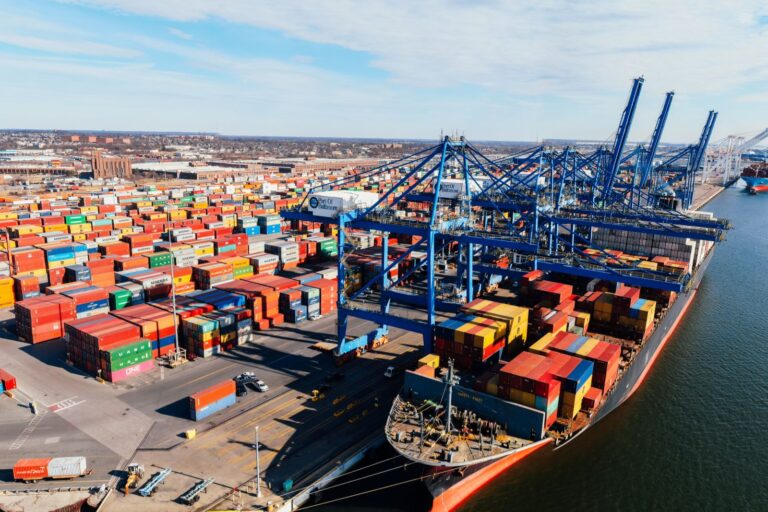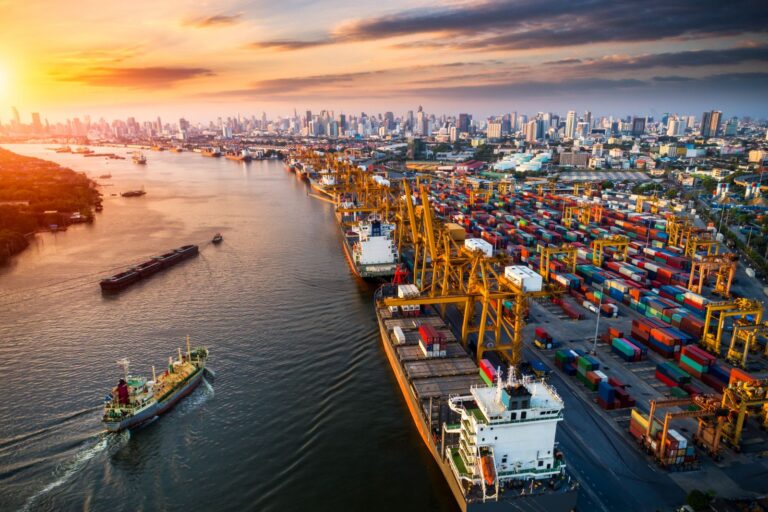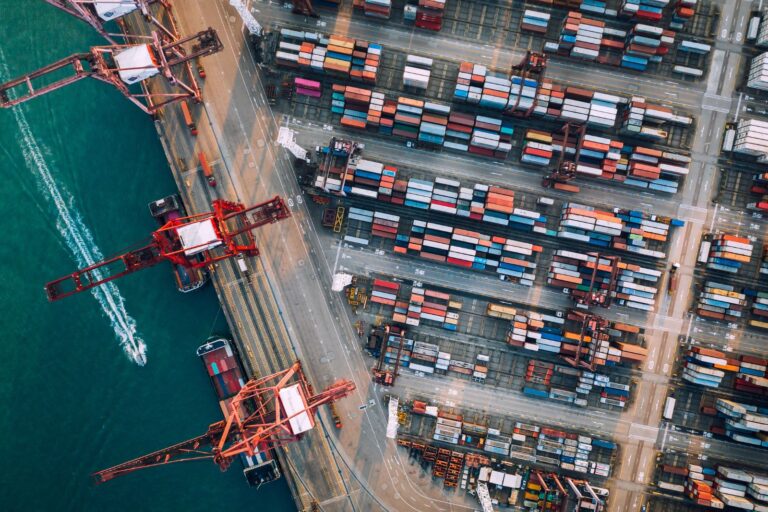In the world of international trade and logistics, understanding the various shipping methods is crucial for businesses aiming to streamline their supply chains. One such method is port-to-door shipping, a service that bridges the gap between ocean freight and final delivery. In this comprehensive guide, we’ll delve into what port-to-door shipping entails, its benefits, how it works, and how companies like EGL – Emerald Global Logistics can assist in optimizing this process.
Navigating the complexities of international shipping can be daunting. Businesses often face challenges in coordinating the movement of goods from the port of arrival to their final destination. This is where port-to-door shipping comes into play. By entrusting this responsibility to experienced logistics providers, companies can ensure timely and efficient delivery of their products.
At EGL – Emerald Global Logistics, we specialize in providing tailored port-to-door solutions that simplify the shipping process, reduce costs, and enhance supply chain efficiency.
What Is Port-to-Door Shipping?
Port-to-door shipping refers to a logistics service where the freight forwarder manages the transportation of goods from the destination port to the final delivery address. Unlike port-to-port shipping, which only covers the sea leg of the journey, port-to-door encompasses the entire inland transportation process, including customs clearance, drayage, and final delivery Shipa Freight.
This service is particularly beneficial for businesses lacking the infrastructure or expertise to handle inland logistics, as it consolidates multiple steps into a single, streamlined process.
How Port-to-Door Shipping Works
The port-to-door shipping process typically involves the following steps:
- Arrival at Destination Port: Upon arrival at the destination port, the goods are unloaded from the vessel and stored temporarily.
- Customs Clearance: The logistics provider handles all necessary customs procedures, ensuring compliance with local regulations and payment of applicable duties and taxes.
- Inland Transportation: Once cleared, the goods are transported via truck, rail, or a combination of both to the final delivery address.
- Final Delivery: The goods are delivered to the consignee’s specified location, completing the shipping process.
By managing these steps, port-to-door shipping providers ensure a seamless transition from port arrival to final delivery.

Benefits of Port-to-Door Shipping
Opting for port-to-door shipping offers several advantages:
- Simplified Logistics: Consolidates multiple transportation stages into a single service, reducing the complexity of managing separate carriers.
- Cost Efficiency: Potentially lowers overall shipping costs by bundling services and reducing the need for multiple intermediaries.
- Time Savings: Streamlines the shipping process, leading to faster delivery times.
- Risk Mitigation: Reduces the risk of delays or damage by entrusting experienced professionals with the logistics process.
- Enhanced Visibility: Provides real-time tracking and updates, allowing businesses to monitor their shipments throughout the journey.
Costs and Pricing Insights
The cost of port-to-door shipping can vary based on several factors:
- Distance: The longer the distance from the port to the final destination, the higher the transportation costs.
- Mode of Inland Transport: Choosing between truck, rail, or intermodal transport can impact pricing.
- Customs Duties and Taxes: Varying rates depending on the destination country and the nature of the goods.
- Volume and Weight: Larger and heavier shipments typically incur higher fees.
To obtain an accurate estimate, it’s advisable to consult with a logistics provider like EGL – Emerald Global Logistics, who can assess your specific needs and provide a tailored quote.
Tips and Best Practices
To optimize your port-to-door shipping experience:
- Choose a Reliable Logistics Provider: Partner with experienced companies that offer comprehensive services and have a proven track record.
- Understand Incoterms: Familiarize yourself with terms like DAP (Delivered at Place) and DDP (Delivered Duty Paid) to clarify responsibilities and costs.
- Plan for Customs: Ensure all documentation is accurate and complete to avoid delays during customs clearance.
- Communicate Clearly: Maintain open lines of communication with your logistics provider to address any issues promptly.
Common Mistakes to Avoid
When engaging in port-to-door shipping, be mindful of the following pitfalls:
- Neglecting to Verify Credentials: Ensure your logistics provider is licensed and reputable.
- Overlooking Insurance: Protect your goods with adequate insurance coverage to mitigate potential losses.
- Failing to Track Shipments: Regularly monitor your shipments to stay informed of their status.
- Underestimating Costs: Account for all potential expenses, including hidden fees, to avoid budget overruns.
Use Cases and Examples
Consider the following scenarios where port-to-door shipping is advantageous:
- E-commerce Businesses: Online retailers can benefit from simplified logistics, ensuring timely delivery to customers without managing inland transportation.
- Manufacturers: Companies importing raw materials can streamline their supply chain by consolidating shipping stages.
- Distributors: Businesses distributing goods across regions can reduce complexity and enhance efficiency.
EGL – Emerald Global Logistics: Your Partner in Port-to-Door Shipping
At EGL – Emerald Global Logistics, we provide tailored port-to-door solutions for businesses across Australia. Our expertise in managing the complexities of international shipping ensures that your goods reach their final destination efficiently and cost-effectively. Whether you’re importing raw materials or distributing finished products, we have the experience and resources to support your logistics needs.
FAQs
1. What is the difference between port-to-port and port-to-door shipping?
Port-to-port shipping covers only the sea leg of the journey between two ports, while port-to-door includes inland transportation from the destination port to the final delivery address.
2. Is port-to-door shipping more expensive than other methods?
While port-to-door shipping may have higher upfront costs, it can be more cost-effective overall by consolidating services and reducing the need for multiple intermediaries.
3. Can I track my shipment during port-to-door shipping?
Yes, reputable logistics providers offer real-time tracking, allowing you to monitor your shipment’s progress throughout the journey.
4. Do I need to handle customs clearance in port-to-door shipping?
No, the logistics provider typically manages customs clearance, ensuring compliance with local regulations.
5. Is port-to-door shipping suitable for all types of goods?
Port-to-door shipping is versatile and can accommodate various types of goods, including perishable items, machinery, and consumer products.
Conclusion
Port-to-door shipping offers a comprehensive solution for businesses seeking to streamline their logistics operations. By entrusting experienced providers like EGL – Emerald Global Logistics, companies can ensure efficient, cost-effective, and reliable delivery of their goods from the port to the final destination.
If you’re ready to simplify your logistics and enhance your supply chain efficiency, contact EGL today for expert support.







